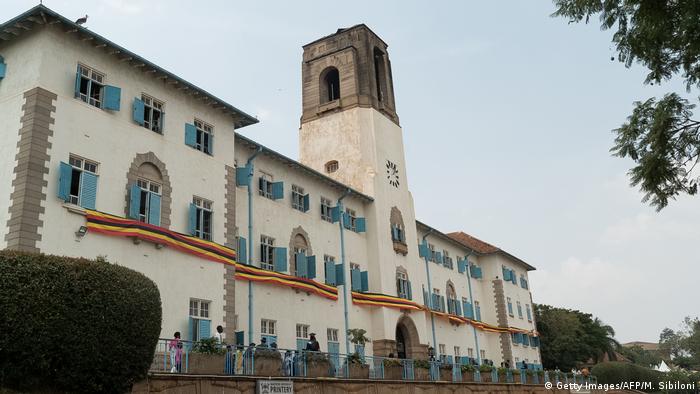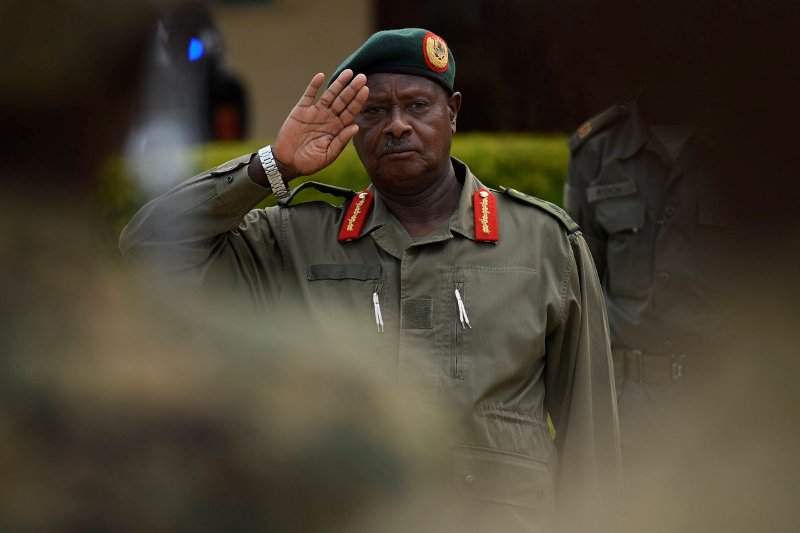Makerere’s Century Commemorations & The Story Of The Three Martyrs

By Isaac Mutema
Makerere University is currently celebrating a century of existence. What is being celebrated is by no measure a small feat. The country’s oldest university truly deserves the accolades and roses streaming in from all manner of people and entities.
All is right for the university and its alumni to have a blast for hitting the milestone of hundred years of excellence. Who can begrudge them, honestly?
But look, those concerned with running and funding of the university plus the alumni as well as the students shouldn’t allow the ongoing celebrations to blind them to the daunting challenge of building for the future which is what exactly the motto of the university is.
In the same vein, the celebrations call for a critical look into the past. This is necessary in order to establish the mistakes that have been made over the years. So as to try to remedy those blunders on the way to meeting the critical task of building for the future.
Building for the future is both an inspiring as well as testing motto. It essentially means that while the past is important, yet it is the future which is what is so critical.
In short, the university’s motto implies, victory is just but a propeller to even much more success without a stop.
The story of the beginning of Makerere University is written in blood. This in itself is a daunting you ask for the university community– past and present–not to let this story die in vain.
The Spark
The story starts with the colonial government requesting for donations of private land around Makerere hill and its environs. The clarion call comes on heels of the desire by the colonial masters to expand the existing Makerere University College into a fully-fledged university.
The request ends up enlisting untold anger as well as resistance from the concerned Baganda landlords. The same is as well received with both resentment and animosity from within the kingdom of Buganda now ruled by Sir Fredrick Edward Mutebi 11.
The new idea is interpreted by the landlords involved plus Buganda kingdom and many Baganda from all walks of life, as a veiled plot by the Mzungu to grab Buganda’s land.
Pioneer Martyr
But one big man from Mengo, the administrative seat of Buganda kingdom, strangely greets the idea with so much enthusiasm and backing.
That one is Martin Luther Nsibirwa, Mengo’s one singular progressive big wig. He had, unlike many others, straight away figured out the massive value of the fully fledged university to Buganda and the rest of Uganda.
Nsibirwa was the sitting Katikkiro of Buganda kingdom of the time. To put it simpler, he is the foremost political figure in Buganda next in line to the Kabaka.
For supporting the idea of the Mzungu ‘grabbing’ the land of Buganda, Nsibirwa ends up placing himself right within the firing range of the Buganda’s parliament (Lukiiko).
This stance, yet Nsibirwa was the one ideally vested with the powers of presiding over the Lukiiko. Most importantly, he was the one who was now supposed to introduce the idea of giving away the land of Buganda to the Mzungu to erect the potential university.
Using his influence and power of speech, Nsibirwa finally managed to convincingly muscle his idea through the Buganda Lukiiko.
Majority of the Lukiiko members begrudgingly endorsed Nsibirwa’s wish. One man had all along been backing Nsibirwa’s idea. His name is Senseko Serwano Kulubya.
The Plot
So, evil plans to bump off Nsibirwa along with the ‘evil’ idea, kick off pretty in earnest. Nsibirwa frequently attended service at Namirembe Cathedral. He did this before attending to official kingdom’s duties at the nearby Bulange building.
Consequently, the planners of evil against the Katikkiro agree among themselves to use the Cathedral, of all places, as the spot to finally execute the assassination of Nsibirwa.
Meantime, Nsibirwa escalated the matters by handing over a big chunk of land to those desirous of converting Makerere College into a fully-fledged university.
The handover transpired on September 4, 1945. Two days after, Nsibirwa is gunned down at 7.45am. The assassination takes place at Namirembe Cathedral.
The killer ended up denying Nsibirwa a chance to enter the Cathedral to attend his final service before final departure from Earth. He would be buried on September 7, a day after the assassination, at the Cathedral cemetery.
Afterthought
As if adhering to the saying of better late than never, the university authorities would, after the passage of four decades from the time of the assassination of Nsibirwa, name a Hall of residence after the deceased Katikkiro.
Even so, the same would happen under controversial circumstances. The militant students of North Corte sparked off a bloody confrontation at the university.
The rumbling by those students left many students injured and quite a good number of properties belonging to the students and the university itself plus the surrounding communities, vandalized.
The university authorities pissed off by such kind of behavior as exhibited by the North Corte students, banned the use of the name.
This is how the authorities ended up remembering to recognize the man who laid down his life for the realization of the dream of Uganda’s first ever university by renaming North Corte hall after him!
Credibly, the colonial government back in England had itself moved faster and recognized Nsibirwa with an MBE status.
Useful info
See, not only did Nsibirwa advocate for the setting up of Makerere university, he also gave away his land in Mulago to the colonial government to use to construct the Nurses dormitory.
He did all this despite the fact that he himself had not had the benefit of receiving formal education beyond the informal one passed down to him whilst at the home of Sir Apollo Kaggwa.
Not to mention that he took all his children to the creme de la creme of schools in Uganda. Such children include Rhoda Kalema, the Ugandan female ever to become a parliamentarian. Rhoda is still alive and kicking.
Nsibirwa also advocated for the setting up of piped water as well as electricity in Buganda. What’s more? He even spearheaded the construction of Butikkiro, the official residence of the Buganda premier, which is still standing to this day and age at Mengo.
Assassination
Reverting quickly to the assassination, the killer, upon executing the Katikkiro, throws away the gun in the nearby flower garden. He then flees away from the scene of murder.
A report in respect to what has transpired is filed at the Central Police station in Kampala. Detectives quickly go down to work. They finally extract the killer hiding from inside his home in Mengo.
He is identified later on by the police as Senkatuuka. He is an ex-world war two serviceman. He is also a veteran of the African Kings Rifles.
The people whom he had asked to join him in executing the bloody mission, help to implicate Senkatuuka. It also emerges that the killer gun had been hired from Kabaka Muteesa’s palace located at Mengo.
Senkatuuka is finally arraigned before the court in Kampala and denies the charges of murder levelled against him. But the witnesses including his would be accomplices, absolutely pin him down to the murder. He is finally sentenced to death by hanging.
Ssenkatuuka moves to the East African court of appeal. He loses the appeal and later on executed from inside Luzira’s maximum security prison.
Much as he is hanged for the heinous murder, but to a wider section of the people in Buganda, Senkatuuka is revered as a martyr who have laid down his life in protection of Buganda’s land against the victim and the colonialists.
Prof Frank Kalimuzo
The deceased serves as the pioneering Vice Chancellor of Makerere university from 1970 to 1972 having been appointed so by president Apollo Milton Obote.
An eccentric leader, Idi Amin would shortly after Kalimuzo’s appointment, replace Obote following a military takeover of power.
Being a lowly educated president, Amin ends up abhorring and fearing in equal measure those Ugandans who are highly educated and had as well served under Obote.
Subsequent to that phobia for highly educated people, Amin would immediately after assuming power from Obote, proceed to either detain or out rightly assasinate such categories of people.
This is how Kalimuzo ends up being killed a year after Amin’s 1971 coup and his body disappeared by state operatives.
Despite the glaring evidence of Amin’s hatred for highly educated people, Kalimuzo hadn’t let that prompt him into abandoning the budding university. For that dedication to Makerere University, Kalimuzo ends up paying the ultimate price.
During his short stint at the helm of the university, the first Vice Chancellor has managed to introduce the faculties of medicine, law, technology and a diploma in MDD.







